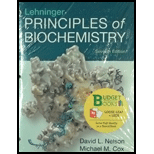
Concept explainers
(a)
To determine: Chargaff concluded that “no differences in composition have so far been found in DNA from different tissues of the same species” but a skeptic don’t agree by the data. How the data can be used to convince a skeptic.
Introduction:
Deoxyribonucleic acid (DNA) is a genetic material which is responsible for passing information from one generation to other. It is a double helical structure that consists of two parallel strands made up of nucleotides. Erwin Chargaff contributed in explaining the structure of DNA.
(b)
To determine: Whether Chargaff’s technique is capable of detecting a difference between the DNA of normal and a cancerous cell.
Introduction:
There are two types of nitrogenous bases: purines and pyrimidines. These bases pair with their complementary bases and form a
(c)
To determine: An argument based on the given data that supports “the base composition of DNA generally varies from one species to another”.
Introduction:
The amount of all bases adenine, guanine, cytosine and thymine is different in different organisms as the content of nucleotides is not fixed for different species. It is one of the conclusions of Chargaff’s rule.
(d)
To determine: An argument based on the given data, that supports “in all cellular DNAs, regardless of the species,
Introduction:
In every living species, the amount of adenine is equal to the amount of thymine and the amount of guanine is equal to cytosine. It is one of the conclusions of Chargaff’s rule.
(e)
To determine: The way in which given data can be used to argue that wheat germ DNA is not a monotonous repeating sequence.
Introduction:
“Tetranucleotide hypothesis states that DNA is a monotonous tetranucleotide
Want to see the full answer?
Check out a sample textbook solution
Chapter 8 Solutions
Loose-leaf Version for Lehninger Principles of Biochemistry 7E & SaplingPlus for Lehninger Principles of Biochemistry 7E (Six-Month Access)
- Attach the followina labels to the diagram below: helicase, single stranded binding proteins, lagging strand, leading strand, DNA polymerase, primase, 5' ends (3), 3' ends (3) (image attached)arrow_forward1. How much energy in terms of ATP can be obtained from tristearin (stearate is 18:0) Show steps pleasearrow_forwardMultiple choice urgent!!arrow_forward
- 1. Write the transamination reaction for alanine. Indicate what happens next to each of the molecules in the reaction, and under what conditions it happens. 2.arrow_forwardCH3 17. Which one of the compounds below is the HNO3 H2 1. NaNO2, HCI Br₂ 1. LiAlH4 major organic product H2SO4 Ni 2. CuCN, KCN FeBr3 2. H₂O, H+ obtained from the following series of reactions? CH3 toluene CH3 CH3 Br Br Br CH3 CH3 && Br Br NH₂ A NH₂ NH₂ B C NH₂ ΝΗΣ D Earrow_forward13. Which one of the compounds below is the major organic product obtained from the following series of reactions? A + H2C=CH-CO Me heat (CH3)2NH 1. LiAlH4 2. H₂O ? 1,3-butadiene OH 'N' B C 14. Which one of the compounds below is the major organic product obtained from the following series of reactions? 'N' D 'N' E 1. XS CH3I 'N' 2. Ag₂O 3. H₂O, A A B с D E Narrow_forward
- A NH2 NH2 B C H₂N. NH₂ D 5. The five compounds above all have molecular weights close to 75 g/mol. Which one has the highest boiling point? 6. The five compounds above all have molecular weights close to 75 g/mol. Which one has the lowest boiling point? E NH₂arrow_forward7. A solution of aniline in diethyl ether is added to a separatory funnel. Which ONE of the following aqueous solutions will remove aniline from the ether layer (and transfer it to the aqueous layer) if it is added to the separatory funnel and the funnel is shaken? A) aqueous NH3 B) aqueous Na2CO3 C) aqueous HCl D) aqueous NaOH E) aqueous CH3COONa (sodium acetate)arrow_forward11. Which of the following choices is the best reagent to use to perform the following conversion? A) 1. LiAlH4 2. H₂O B) HCI, H₂O D) NaOH, H₂O E) Na№3 ? 'N' 'N' C) 1. CH3MgBr 2. HCI, H₂Oarrow_forward
- NH2 ΝΗΣ NH₂ NH2 NH2 A OCH3 NO₂ B C D E 1. Which one of the five compounds above is the strongest base? 2. Which one of the five compounds above is the second-strongest base? (That is, which one is next-to-strongest base?) 3. Which one of the five compounds above is the weakest base? 4. Which one of the five compounds above is the second-weakest base? (That is, which one is next-to-weakest base?) NO2arrow_forwardDraw a diagram to demonstrate 3' to 5' exonuclease activity?arrow_forward1. Write the piece of mRNA that would code for the amino acid sequence NH3 - met - tyr - cys- his- CO2. Label the 5' and 3' ends. (diagram attached) 2.arrow_forward
 BiochemistryBiochemistryISBN:9781319114671Author:Lubert Stryer, Jeremy M. Berg, John L. Tymoczko, Gregory J. Gatto Jr.Publisher:W. H. Freeman
BiochemistryBiochemistryISBN:9781319114671Author:Lubert Stryer, Jeremy M. Berg, John L. Tymoczko, Gregory J. Gatto Jr.Publisher:W. H. Freeman Lehninger Principles of BiochemistryBiochemistryISBN:9781464126116Author:David L. Nelson, Michael M. CoxPublisher:W. H. Freeman
Lehninger Principles of BiochemistryBiochemistryISBN:9781464126116Author:David L. Nelson, Michael M. CoxPublisher:W. H. Freeman Fundamentals of Biochemistry: Life at the Molecul...BiochemistryISBN:9781118918401Author:Donald Voet, Judith G. Voet, Charlotte W. PrattPublisher:WILEY
Fundamentals of Biochemistry: Life at the Molecul...BiochemistryISBN:9781118918401Author:Donald Voet, Judith G. Voet, Charlotte W. PrattPublisher:WILEY BiochemistryBiochemistryISBN:9781305961135Author:Mary K. Campbell, Shawn O. Farrell, Owen M. McDougalPublisher:Cengage Learning
BiochemistryBiochemistryISBN:9781305961135Author:Mary K. Campbell, Shawn O. Farrell, Owen M. McDougalPublisher:Cengage Learning BiochemistryBiochemistryISBN:9781305577206Author:Reginald H. Garrett, Charles M. GrishamPublisher:Cengage Learning
BiochemistryBiochemistryISBN:9781305577206Author:Reginald H. Garrett, Charles M. GrishamPublisher:Cengage Learning Fundamentals of General, Organic, and Biological ...BiochemistryISBN:9780134015187Author:John E. McMurry, David S. Ballantine, Carl A. Hoeger, Virginia E. PetersonPublisher:PEARSON
Fundamentals of General, Organic, and Biological ...BiochemistryISBN:9780134015187Author:John E. McMurry, David S. Ballantine, Carl A. Hoeger, Virginia E. PetersonPublisher:PEARSON





